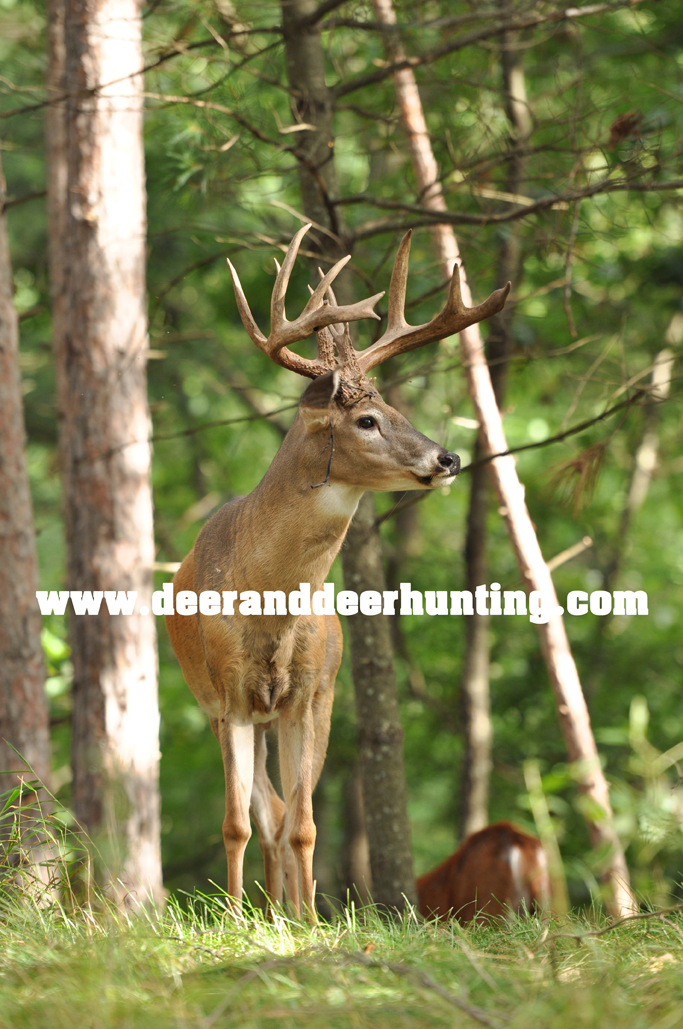
By Bob Robb
For a long time, I looked at fences on hunting land as a real pain. All they seemed to do was hold up gates I had to keep opening and closing, or rip my pants and shirts when I tried to go over them.
Then I began talking with landowners about fences, and how they might be used as a positive in my deer hunting. Today, my attitude has changed. I still hate to open and close gates, but I have learned that fences can be a real tool in an archer’s war chest.
Fence Crossings
Fences are nothing more than man-made boundaries. They mark property lines, as well as help section off land into various different uses. They keep cattle, horses and other large domestic animals confined to certain areas and, more importantly, out of others.
Fences can serve other functions, too, and they aren’t all made from wire and steel posts. For example, rock walls can help shore up creek banks and water holes. And when woods are cleared, the resulting detritus can be pushed up to form a barrier along field edges.
All types of fence barriers can be used to your advantage when bow hunting. The most obvious is to locate trails that indicate places where deer frequently cross a fence. Depending on conditions and the time of year, these fence crossings can be excellent places to set a stand.
Spots where deer are crossing under a fence are easy to see. Just look for a well-worn trail, then check the lower strand of fence for deer hair. Soft, pliable hair coupled with fresh tracks is the kind of sign even a blind man can interpret
You can take this a step further by scouting to find where the deer crossing the fence are coming from and going to. I arrowed a nice 8-point buck one year in Kansas hunting such a set-up. The fence ran across an oak-studded hill. On one side was a large, brush-choked flat that deer used as a bedding thicket. On the other side was a 5-acre green field and small cluster of white oak trees that were dropping a load of large, sweet nuts. Walking the fence, I found where the deer were obviously crossing under it in two places. However, I set up away from those spots, on a less well-defined trail. This trail had a rub line running along it, and where it met the fence the top strand of the four-foot high fence hung low. If you looked closely you could see where a buck or two traveled up the trail along the rub line, jumped the fence, and headed down the slope to check the field for does.
I used a climbing stand to set up in a big red oak just off the crest of the hill on the bedding thicket side of the fence, and gave myself a 25-yard shot to the fence crossing. The first afternoon, the buck came up out of the bottom like a submarine, passed right next to the 6-inch cedar he’d been rubbing, and approached the crossing spot. He never made it.

Bag the Biggest Buck
of Your Life Collection
Fencing for Funnels
You can also use fences as artificial barriers that can produce shot opportunities that might otherwise not occur. One way is by pushing brush and downed trees into solid barriers around newly-created fields. My friend Chuck Sykes, a biologist who specializes in both creating top-quality deer programs for landowners as well as booking fee hunts on these well-managed properties showed me how this works near his Alabama home.
Sykes takes it to the extreme. He had used heavy equipment to clear a 3-acre food plot, which he subsequently planted in clover and alfalfa. As he cleared the land, he piled the slash along the field edge so it created a solid barrier on two sides of the field. Those sides just happened to be the ones that his scouting had shown were nearest the most commonly-used bedding thickets. Then, he strategically opened up two small holes in the wall right where two well-used trails ran.
Both openings had large oaks within 25 yards — perfect for an archery ambush site. He also erected a shooting house across the field for gun hunters.

Tom Miranda’s Quest for the North American Super Slam
Open the Flood Gates
Some fences are built in such a way that is tough for deer to cross them. By making it easy for them to get from one side to the other you can often set up shots that you might not otherwise get.
For example, if you find a heavily-used trail that parallels a fence for any distance before crossing, you can sometimes encourage the deer to cross the fence at a place where it is to your advantage to set up a stand. With the landowner’s permission, loosen and raise the lower fence strand between a pair of fence posts near a good stand location. This will create a duck-under where the deer have a more direct route to the food.
With some careful thought and analysis, most fences can be used to the bowhunter’s advantage. Start looking at them as your ally, not your enemy.
— Bob Robb is a professional outdoor writer and accomplished whitetail bowhunter from Arizona.
 Whether you are thinking of bow hunting for the first time or are a seasoned pro, you’ll discover the best tips on bowhunting in the pages of Deer & Deer Hunting magazine. Learn how to get proven results every time with expert advice from the pros.
Whether you are thinking of bow hunting for the first time or are a seasoned pro, you’ll discover the best tips on bowhunting in the pages of Deer & Deer Hunting magazine. Learn how to get proven results every time with expert advice from the pros.
Subscribe today and SAVE 68 percent!

